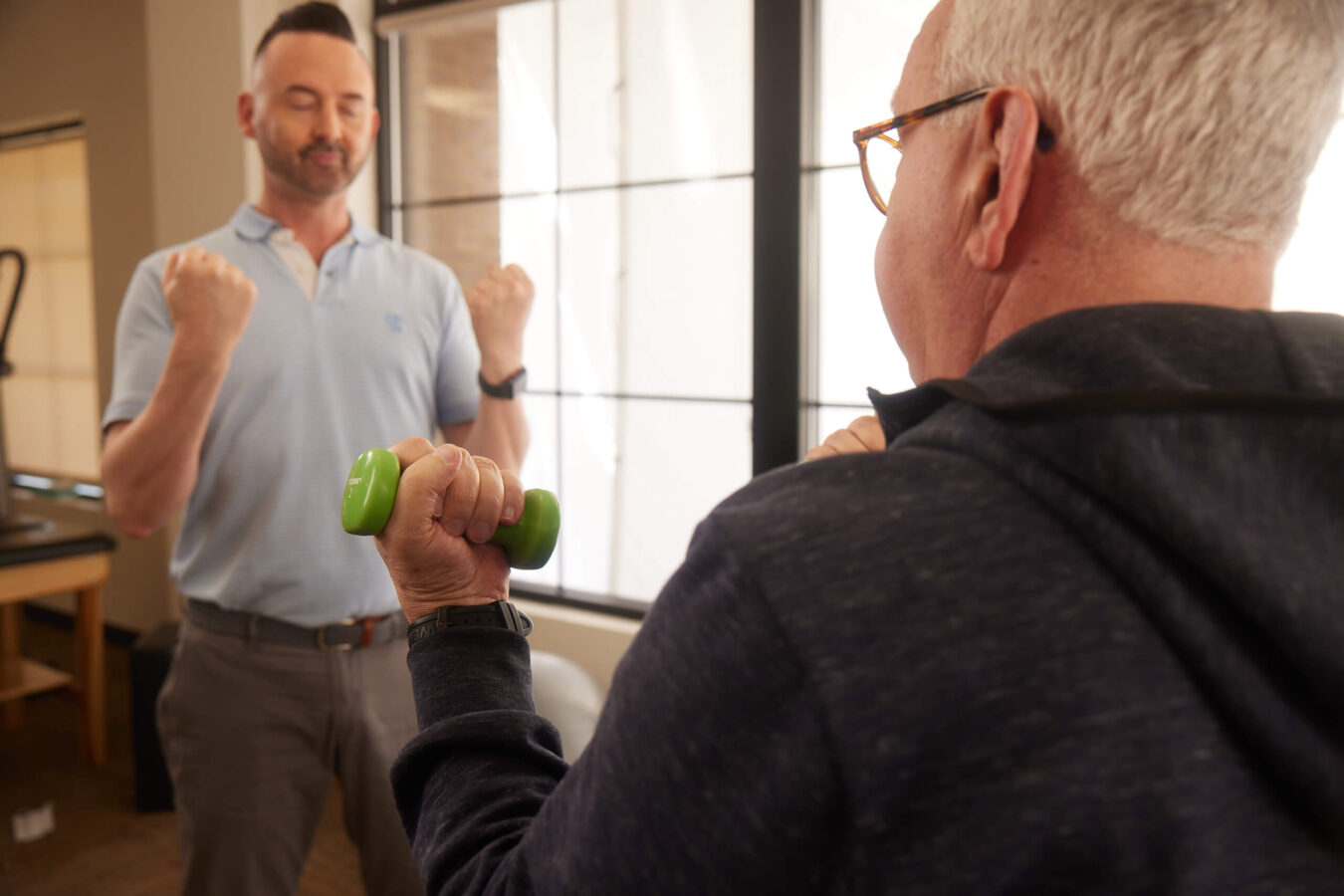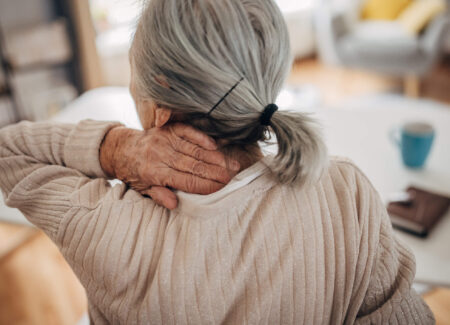
Medically reviewed by Misty Seidenburg
After Alzheimer’s disease, Parkinson’s disease is the second most common neurodegenerative condition affecting people in the U.S. Although some experts estimate as many as one million Americans have Parkinson’s, many go undiagnosed—so that number is likely to be much higher.
The National Institute of Neurological Disorders and Stroke (NINDS) confirms exercise therapy can offer relief from certain Parkinson’s symptoms. Physical therapy for Parkinson’s disease combines exercise, speech therapy, and other evidence-based modalities to help improve stability, strength, balance, and function for patients of all ages.
Parkinson’s disease (PD) is a chronic neurologic condition named for the physician who first diagnosed it back in 1817: Dr. James Parkinson. PD involves the slow, progressive loss of the nerve cells in the brain that produce dopamine.
Dopamine is a neurotransmitter that has several important functions, including creating feelings of motivation, satisfaction, and pleasure. It also plays a part in controlling body movement and coordination.
Common symptoms of PD include:
Over time, as PD progresses, the individual may also experience soft speech, difficulty swallowing, speaking, or chewing, and postural instability that increases the risk of falls. PD symptoms vary from person to person.
Physicians and other providers refer to PD as an “idiopathic” disease, meaning it has no known cause at this time. We don’t know why the brain loses dopamine, but researchers believe genetics and environmental factors play a part.
Currently, there is no cure for PD. However, with medication, lifestyle changes, and physical therapy, many symptoms are manageable. Let’s look at how physical therapy helps improve motor function and mobility for those living with Parkinson’s.
The Parkinson’s Foundation recommends physical therapy for all stages of PD, because of its benefits for improving or maintaining symptoms. The Parkinson’s Outcome Project found that at least 2.5 hours of physical activity per week can slow progression of the disease.
That is why exercise therapy is one key component of a holistic physical therapy program for PD. Physical therapy provides a safe, guided aerobic and learning-based exercise regimen to target specific motor impairments.
A physical therapist also provides adjustments to help patients stay safe while exercising at home. They may suggest fun, safe ways to stay moving outside the clinic like: tai chi, yoga, tennis, and walking.
Because individuals with PD may be more likely to fall, physical therapy also focuses on balance and fall prevention. Physical therapy can help patients reduce their fall risk and possibly prevented serious fall-related injuries by improving:
Strength and balance training also improves proprioception, which is the body’s ability to sense movement, action, and location. This can be incredibly effective for improving stability as the patient navigates everyday tasks.
The Lee Silverman Voice Treatment (LSVT) BIG program is an umbrella term for various specialized physical therapy and occupational therapy programs designed for people with PD.
LSVT was initially created to address the speech and swallowing challenges commonly associated with the condition. (This is referred to as LSVT LOUD.) LSVT LOUD helps people with PD recalibrate their perception of loudness so they can speak at a more normal volume.
This protocol has since expanded to include therapies targeting functional difficulties, applying the same principles. This is called LSVT BIG. As the disease progresses, the person’s movements tend to become smaller and smaller.
LSVT BIG aims to recalibrate the patient’s perception of the size of their movements so they are able to move better and more intentionally. It uses large, exaggerated movements that create smoother, more purposeful movements for better overall function.
The benefits of LSVT therapies for Parkinson’s include:
Together, these results offer a better quality of life. The best way to find out if LSVT can make a difference for you is to schedule a physical therapy evaluation. Using this assessment, your physical therapist develops a customized plan to address all of your symptoms to effectively manage your disease.
Disease management is a key benefit of physical therapy. If you want to feel and move better despite living with a chronic condition, help is available. Find a physical therapy clinic near you.

